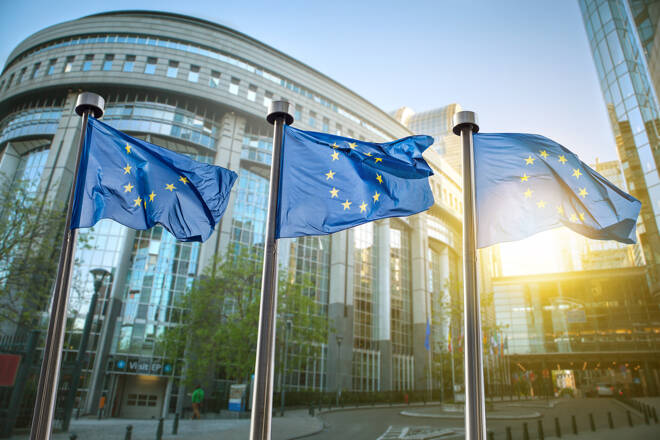Advertisement
Advertisement
European Supranationals Outlook: Path Clears for Euro-Denominated Green and Social Safe Assets
Published: Feb 17, 2021, 14:32 GMT+00:00
European supranational bonds could account for about EUR 900bn of EUR 2.5trn of additional highly rated European debt coming to market by 2025, developing green and social euro-denominated yield curves and enhancing the currency’s global role.
Download Scope Ratings’ 2021 Supranationals Outlook.
We believe the momentous shift in availability of safe assets in Europe reflects the national and supranational European fiscal stimulus to counter the Covid-19 shock, providing comprehensive safety nets for households, businesses and governments amid the pandemic, and financing a sustainable recovery in the coming years.
A sustainable recovery, green transition are Europe’s main policy priorities
European supranationals are adapting mandates and operating guidelines to ensure carbon neutrality by 2050, which, given the weight they carry in capital markets and policy making, will influence industry standards and affect investors and the private sector globally.
The EIB and EBRD, for example, are aligning their financing activities with Paris Agreement terms and raising their climate-finance-related objectives, while the EU, via its EUR 750bn Next Generation EU recovery fund of which about EUR 225bn will be issued in green bonds, will play a pivotal role in providing a safe, green asset in Europe.
Social bond issuance is also set to rise
But EU safe assets will not only be green. Social bond issuance is also set to rise markedly. The EU’s Support to mitigate Unemployment Risks in an Emergency (SURE) scheme of up to EUR 100bn has completely changed the landscape for supranational social bond issuance.
Of the EUR 100bn, EUR 53.5bn has already been borrowed and disbursed to 15 member states since an inaugural bond issue on 20 October 2020. With EUR 90.3bn requested overall, EUR 36.8bn is still to be raised, which is likely to be mostly concluded by the end of Q2 2021.
These programmes underpin the EU’s emerging role as a major contributor to sustainable finance in capital markets and, depending on varying investor demand for the different types of programmes, there is a possibility of distinct social, green and conventional curves in the future.
Open questions remain
Open questions remain: how much will the EU ultimately issue in bonds, how much will be green or conventional, and to what extent will it be more than matched by a greener greenback under the new US administration?
The Covid-19 outbreak also entails risks through possible deterioration in asset quality and higher leverage.
Still, while risks remain, European supranationals have strong credit profiles based on robust balance sheets and sizeable buffers, as well as rock-solid shareholder support. We expect credit profiles to remain resilient in 2021 as reflected in our current Stable Outlooks for supranational borrowers.
For a look at all of today’s economic events, check out our economic calendar.
Alvise Lennkh is the Deputy Head of Sovereign and Public Sector ratings at Scope Ratings GmbH.
About the Author
Alvise Lennkh-Yunuscontributor
Alvise Lennkh-Yunus is Head of Scope’s Sovereign and Public Sector ratings team.
Advertisement
